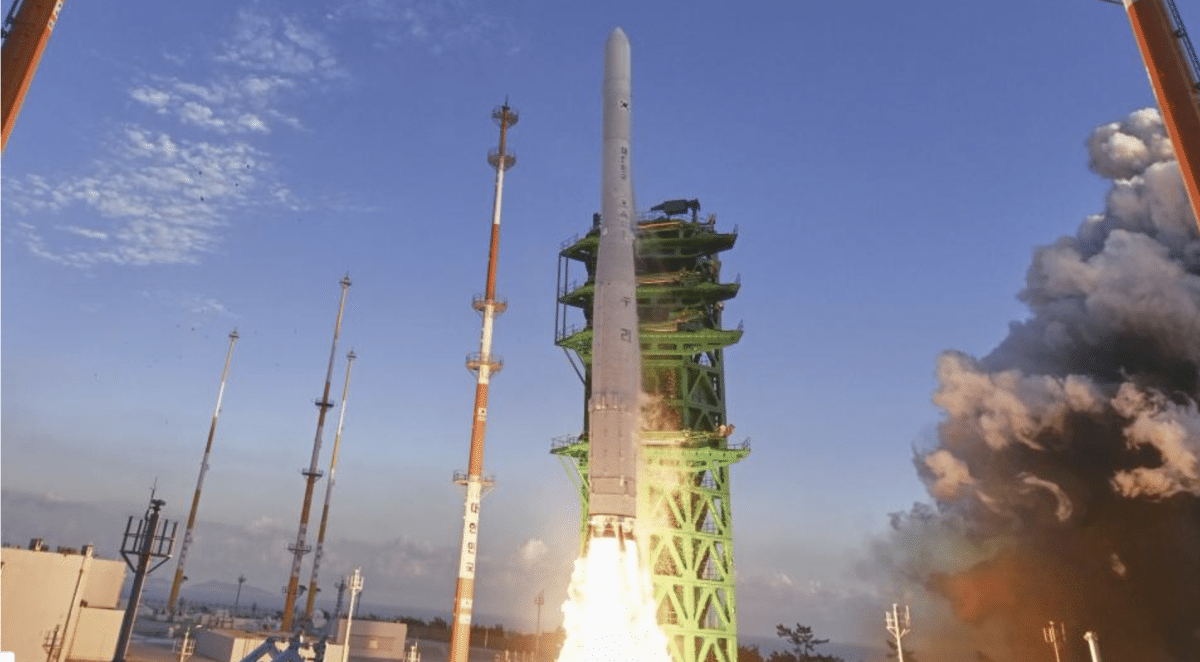Commercial satellite programs are no longer the privilege of established space nations. South Korea now wants to join the space nations club for good on May 24 with the third launch of its Nuri space rocket. The 47.2 meter rocket will then launch eight South Korean-made satellites into orbit around the Earth.
Lee Sang-ryool, the president of the Korea Aerospace Research Institute (KARI), named the strategic importance of the national effort: “For the past few decades, we have participated in space projects as a customer, from now on we will be a rocket launch provider.” An example is the lunar satellite Danuri, which was launched into orbit around the Earth’s satellite last year on board a rocket operated by the US space company SpaceX.
South Korea’s way to the space rocket
It took South Korea long enough to get there. In 2010, the development of the space rocket began. 1.5 billion dollars and eleven years later the first maiden flight failed. A year later, in 2022, South Korea then advanced into the satellite-launching nations with a successful shipment of test satellites to the Soviet Union, the United States, the European Union, China, Japan, India, Israel, Iran, and North Korea.
But South Korea is only the seventh nation capable of launching over a tonne artificial satellites into orbit around the Earth. Whether the rocket can really keep up with the previous offers in terms of price is still the question. However, there is no question about the missile’s importance for South Korea’s economic and military strategists.
Japan has always tried everything possible with electronics – and often the impossible. Every Thursday our author Martin Kölling reports on the latest trends from Japan and neighboring countries.
On the one hand, South Korea wants to benefit in the long term from the supposedly upcoming development of near-Earth space, the moon and perhaps the planet Mars by developing its own space economy. After all, more than 300 research organizations and companies took part in the development of the rocket. These include large corporations that see space as an additional source of income for their civilian and military businesses.
Korea Aerospace Industries, which also produces fighter jets and helicopters, led construction of the missile. Hyundai Heavy Industries, whose shipyards also export warships, was responsible for the launch pad. Hanwha Aerospace, which wants to compete with global defense companies like Lockheed Martin after merging with a munitions manufacturer, manufactured the engines for the third flight.
South Korean military applications
On the other hand, it is also about military applications of its own space program. The government has openly declared that it also wants to launch surveillance satellites into space. This should allow the military to observe the self-declared nuclear power North Korea with their own eyes in space, which is threatening the South with a growing arsenal of nuclear weapons and missiles.
However, the risk is high. If the launch fails on May 24th, further development of its own rocket program will be delayed. Neighbor Japan has just experienced this with its larger H3 space rocket. The Falcon 9 is supposed to snatch away the 67-meter-long means of transport from SpaceX customers. But the maiden flight in March failed. Japan’s space agency Jaxa therefore canceled the planned launch of the previous H2A launcher for the time being. First, the cause of the launch failure of the new rocket is sought.

(jl)
